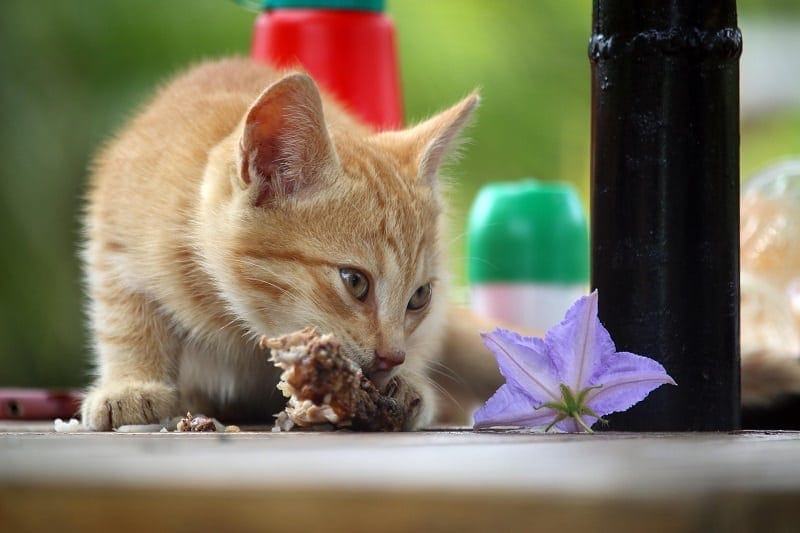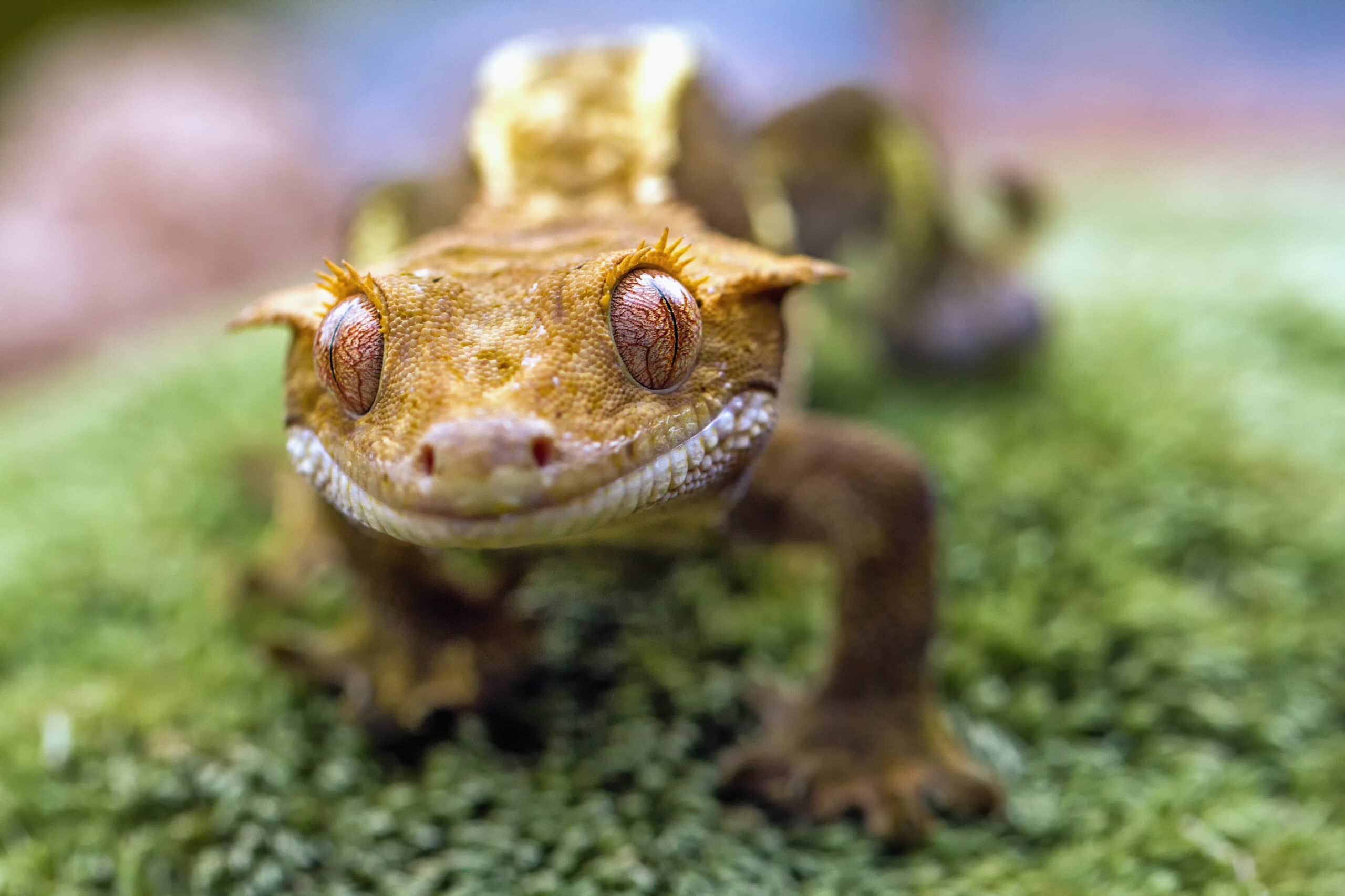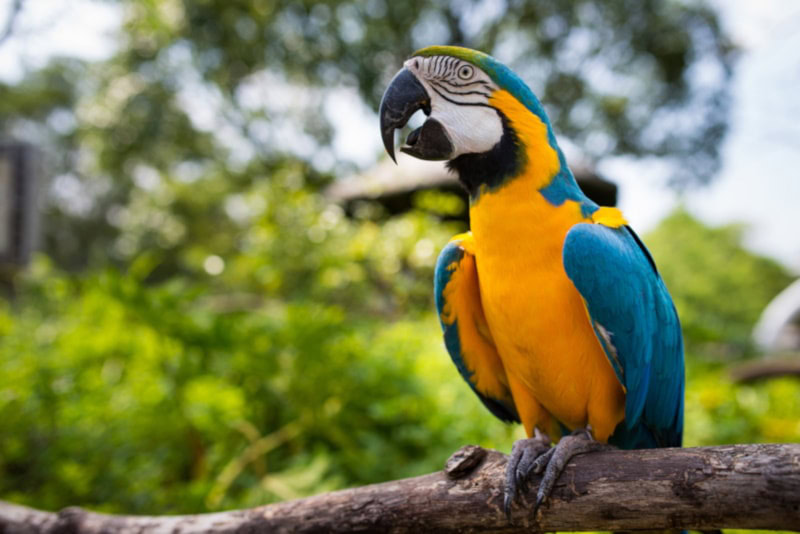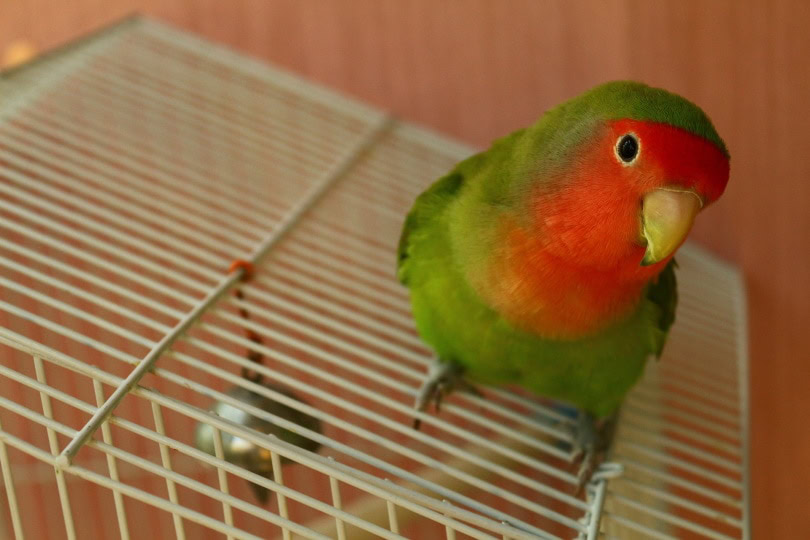VET APPROVED

The information is current and up-to-date in accordance with the latest veterinarian research.
Learn more »Click to Skip Ahead
If you take a stroll down the cat food aisle, you may get the wrong impression of cats. Most cat foods sitting on shelves feature a blend of vegetables, fruits, and meat in an attempt to provide cats with “everything” that they need in one meal. You may even find grains and rice mixed in. Unfortunately, this isn’t exactly what cats need.
Looking at their diet range, you may end up wondering if cats are omnivores. The answer to that question is simple: no, they aren’t omnivores. Cats are obligate carnivores or hypercarnivores. This means that cats must eat animal protein to survive.
Read on to learn more about your carnivorous cat and why they aren’t an omnivore. This way, you can provide them with the best diet possible for better overall health.

What’s the Difference Between Omnivores and Carnivores?
Carnivores survive on meat. This means whether the animal is in the wild or housed, meat must be present in their diet. The mouth of a carnivore is designed to rip, tear, and cut flesh and crush bones, if need be. A cat’s jaw moves up and down, which makes it better suited for meat eating. Your cat’s short digestive tract is also designed for the life of a carnivore. Their gastric juices are more acidic, which makes them better equipped to deal with bacteria that may result from consuming meat.
Omnivores, however, can survive eating both plants and animals. Their heads and teeth have evolved to suit a variety of foods.
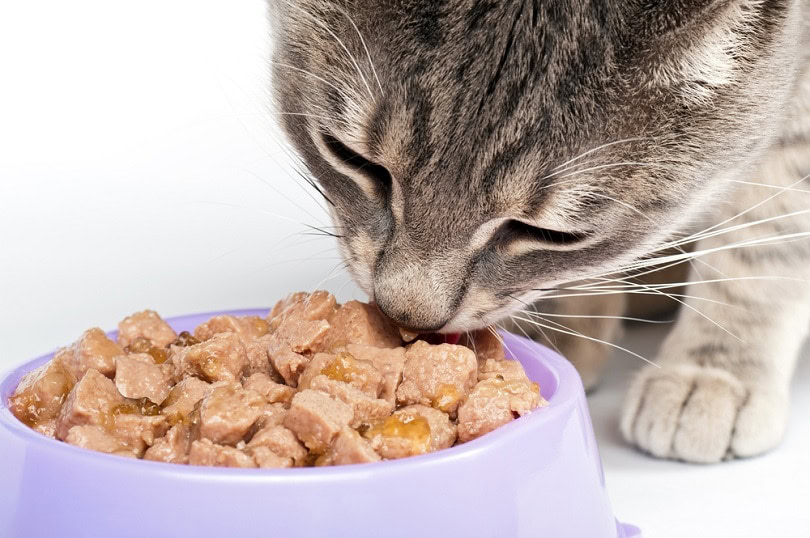
Cats Are Obligate Carnivores
You may be curious about the term obligate carnivore. Such animals must meet their bodies’ nutritional needs by consuming other animals. Cats are considered obligate carnivores. They require more protein than most other animals. This protein is found in meat, not plants.
In the wild, cats easily meet their nutritional needs by catching small prey. House cats don’t hunt, and therefore, they must get the protein and nutrients they need from the cat food we feed them. Cat food companies make sure that their recipes include all the nutrients cats need, and sometimes they supplement diets to meet these requirements.
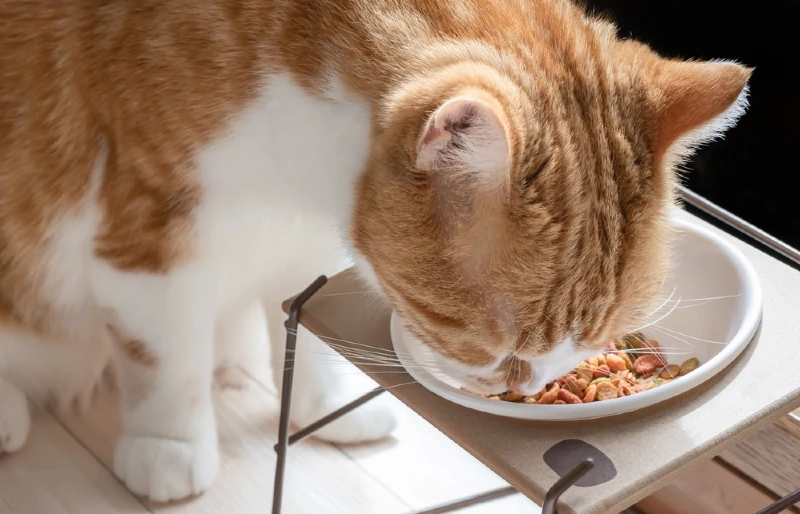
Why Is Cat Food Not Completely Made of Meat?
You may be wondering why cat food companies include other ingredients such as fruits and veggies in their cat foods. Being an obligate carnivore means that at least 70% of their diet must be animal meal, but not 100%. Therefore their diet can contain other ingredients, and not only the quantity, but the quality of the protein is also extremely important.
Many cat food companies claim that these added veggies are good for a cat’s diet. While the vegetables that are added to cats’ diets are safe for them to consume in limited amounts, it’s not part of their diet in the wild. Typically, wet cat food features more protein and less of other ingredients. While a chicken isn’t something a cat would commonly kill in the wild, most cat food brands do offer fish and meat versions to give your cat the opportunity to taste real meat when they eat.
High-quality cat food is an important part of fostering a long and healthy life for your cat but the right cat food and water dish will promote good posture, offer whisker relief, and aid in good digestion. The Hepper NomNom Cat Bowl is our favorite bowl since it offers all of the above and is beautifully crafted to meet modern home stylings. The wide tray design catches any food and water spills and the entire setup is dishwasher safe. Learn more about the Hepper NomNom Cat Bowl here. At PangoVet, we’ve admired Hepper for many years and decided to take a controlling ownership interest so that we could benefit from the outstanding designs of this cool cat company!

Conclusion
As you can see, cats are not omnivores. These feisty felines require meat to live. While we’ve brought cats into our homes, relieving them of the need to hunt prey to survive, we must remember their true nature. By ensuring that they eat foods mainly based on animal protein, we can help our feline pals meet their nutritional goals without the need to supplement their diets. Keep this in mind when you’re browsing the cat food aisle in your favorite store.
- You may also want to read: Can Cats Taste Sweetness? Here’s What Science Says
Featured Image Credit: Mcability, Pixabay
